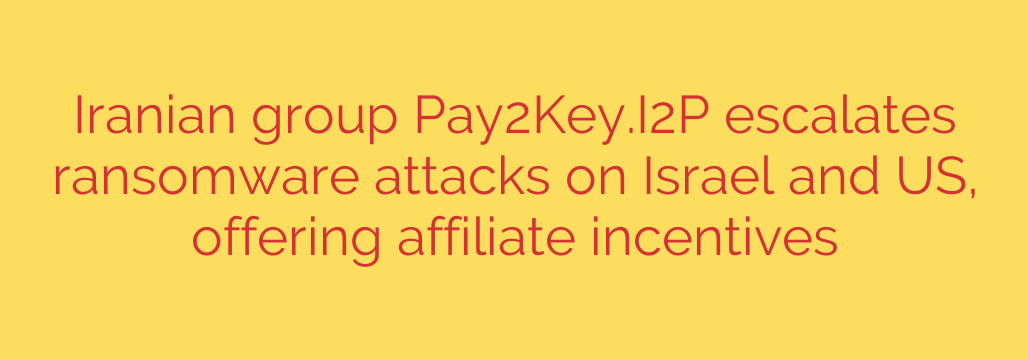
Escalating Ransomware Threat: Understanding the Tactics of a Prominent Group
The global landscape of cyber threats is constantly evolving, with malicious actors refining their techniques to maximize impact and profit. Recent intelligence highlights a concerning escalation in the activities of a specific Iranian-linked threat actor known as Pay2Key.I2P. This group has been increasingly active, focusing their disruptive ransomware attacks primarily on targets in Israel and the United States.
Analysis of their operations indicates a notable shift, signifying a more organized and potentially broader campaign. While ransomware attacks have become a pervasive issue, Pay2Key.I2P distinguishes itself not just by its targets but also by its operational model. A significant and worrying development is their apparent move towards a ransomware-as-a-service (RaaS) model.
Evidence suggests that Pay2Key.I2P is actively seeking to expand its reach and capabilities by offering affiliate incentives. This means they are potentially recruiting other cybercriminals or groups to deploy their malicious payload in exchange for a percentage of the ransom payments. This tactic is common among highly prolific ransomware operations and signals an intent to scale their attacks rapidly and effectively. By leveraging affiliates, the core group can distance themselves from the direct execution of attacks while significantly increasing the volume and diversity of their targets.
The use of the I2P network (Invisible Internet Project) within their name and operations points to a deliberate effort to enhance their anonymity and evade detection by cybersecurity professionals and law enforcement. I2P is designed for anonymous communication, making it more challenging to trace the origin and command-and-control infrastructure used by the group.
The focus on critical regions like Israel and the US underscores the geopolitical motivations potentially intertwined with financial gain. Organizations in these areas, across various sectors, should remain highly vigilant.
Key indicators of compromise or attack vectors associated with ransomware like that deployed by Pay2Key.I2P often include exploiting vulnerabilities in public-facing services, phishing campaigns targeting employees, or compromising weakly secured remote access points.
Protecting Your Organization:
Given the escalating threat posed by groups utilizing sophisticated techniques and potentially affiliate networks, robust cybersecurity measures are more critical than ever. Consider implementing the following:
- Maintain Regular Backups: Ensure critical data is regularly backed up to an offline or secure remote location that cannot be accessed or encrypted by ransomware.
- Patch and Update Systems: Promptly apply security patches and updates to all software, operating systems, and firmware to close known vulnerabilities.
- Implement Multi-Factor Authentication (MFA): Enforce MFA for all remote access, critical systems, and cloud services to significantly reduce the risk of credential compromise.
- Strengthen Network Security: Employ firewalls, intrusion detection/prevention systems, and segment networks to limit lateral movement in case of a breach.
- Conduct Security Awareness Training: Train employees to recognize phishing attempts, malicious links, and suspicious attachments.
- Develop an Incident Response Plan: Have a clear, tested plan in place for responding to a ransomware attack, including communication strategies and recovery procedures.
The evolution of threat actors like Pay2Key.I2P highlights the dynamic nature of cyber threats. Staying informed about their tactics and maintaining a proactive security posture are essential steps in defending against increasingly sophisticated ransomware campaigns.
Source: https://securityaffairs.com/179754/malware/iranian-group-pay2key-i2p-ramps-up-ransomware-attacks-against-israel-and-us-with-incentives-for-affiliates.html








